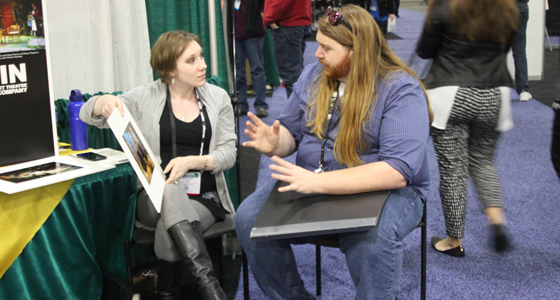Costume designer, educator, and USITT Board Member Rafael Jaen offers sound advice on creating, sustaining, and presenting a portfolio to land your dream school or job.
- What are the top 3 things that make a portfolio stand out amongst others?
- RJ: In my opinion, a design-tech portfolio needs to address three things from the get go:
- Feature the applicant’s current abilities. The interviewer wants to know the artist’s potential today or in the near future.
- Clearly demonstrate project process and end result. Each project needs to have clear organization; starting with some research images and a few conceptual notes; having some process pictures (with notes) and drawings (drafting, rough sketches, process images, etc.); and adding large photos of the finished product. In this way, the interviewer can see the progression of the work from the beginning to the middle to the end.
- Be visually appealing. Excellent production photos, high resolution, and true to the production’s lighting.
- RJ: In my opinion, a design-tech portfolio needs to address three things from the get go:
- How should you prepare for your portfolio presentation/interview?
- RJ: I always recommend reviewing the work in the portfolio making sure that a) the portfolio case is clean and neat, b) that all the materials are in order, properly credited, and labelled; and c) to get re-acquainted with each project’s talking points that the designer or technician wants to share with the interviewer — keeping it concise!
- What are the top things employers/schools look for in a portfolio?
- RJ: It depends on what the organization or institution’s focus is; for example: Some venues look for a classic physical portfolio case and a flash drive; and others required both; a classic physical portfolio and a website. I recommend researching the site expectations beforehand to properly prepare for the interview.
- What reigns supreme? An online portfolio, or the classic physical portfolio?
- RJ: Both, some producers, production managers, and directors like to see both. Websites are great for cyber-introductions and the classic physical portfolio can prompt dialogue when doing an in-person interview.
- How should you carry yourself during your presentation?
- RJ: Dress professionally, speak clearly, look the interviewer in the eye, and be comfortable with handling your classic physical portfolio. Practice, practice, practice; remember that first impressions count!
- What is the number one mistake people make when putting together a portfolio?
- RJ: Scrapbooking is one usual mistake,e.g., using construction paper to create decorative borders that don’t relate to the projects and fonts that distract from the content. The portfolio needs to be a sleek and carefully planned dossier rather than a holder of clippings.
